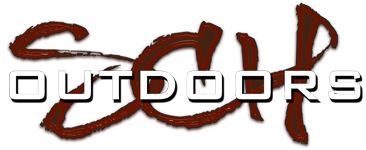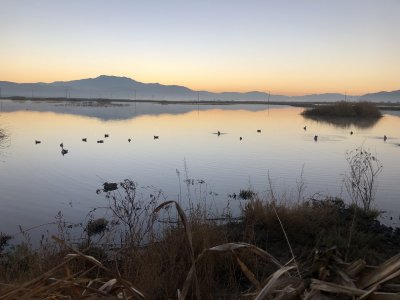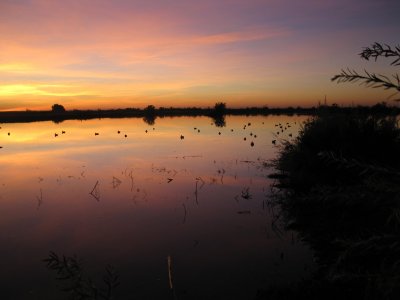That was the short answer...

Many brands of decoys don't offer multiple locations, because what ever the direction of the wind is, is the way a duck will normally face...In the best conditions, the wind is at your back...Decoys will be faced towards you, as if they're heading towards the shore...Main body of decoys right in front of you...In the worst conditions, the wind is in your face...Then you would want your decoys hooked in the rear...Again, making them appear they're headed towards shore...Ducks that headed away from shore can be a sign of danger to them.
Winds that are left to right or right to left...You would want them hooked in the front with the main body of decoys on the up wind side...Ducks almost always land into the wind...Hence, having the decoys upwind, so they attempt to land in front of you.
Under calm conditions (the most common) and with some kind of movement (jerk string, shakers, pulsators, etc.), you would want decoys looking in all directions like actively feeding ducks would look.



